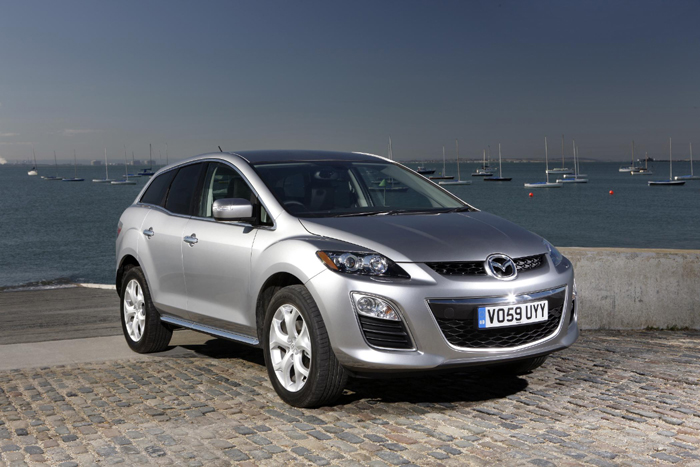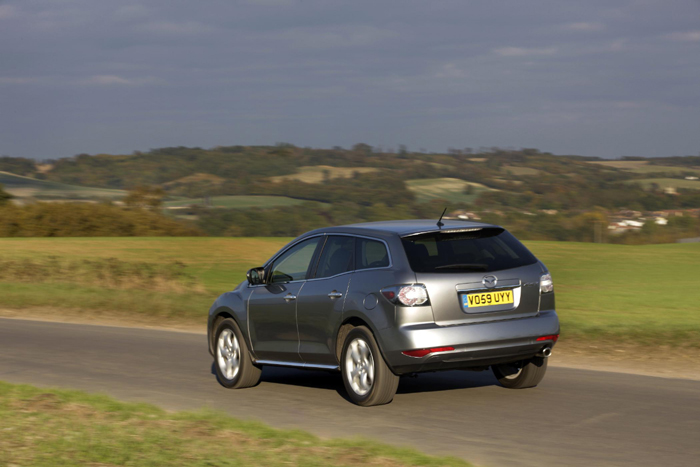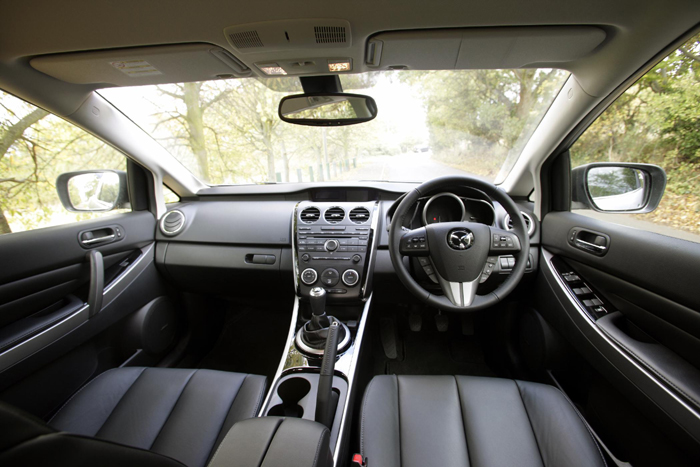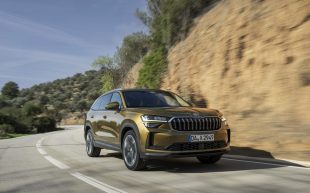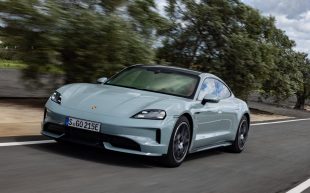Mazda CX-7 review (2007-2011)
Good to drive but getting on
What is the Mazda CX-7?
The CX-7 was one of the original Frankenstein car creations, a sporty coupé/off-roader fusion that, like the Soda Stream and the eye-melting movie Tron, was arguably ahead of its time. It was originally offered only with a 2.3-litre turbocharged petrol engine which seriously restricted sales in Britain, as no company car driver would touch it with a barge pole given its prohibitively expensive tax bills.
Search for and buy a used Mazda CX-7
So Mazda revamped the range in 2009, replacing the petrol engine with a 2.2-litre, four-cylinder turbo diesel and offering a straightforward, single-model with all the bells and whistles. Features such as climate control, cruise control, leather trim, xenon headlamps, a Bose audio system and electric adjustment for the heated seat were all standard, for a £27,595 OTR price. That price put the CX-7 up against competitors such as the Audi Q5, BMW X3 and the most basic versions of the Range Rover Evoque, not to mention the Kia Sportage and Hyundai iX35. And then there was Mazda’s in-house rival, the new CX-5.
The drive
The original CX-7 was based on the Mazda 6 MPS, a high-performance four-wheel-drive saloon that could hold its own in any traffic-light grand prix. That meant that for once, a car manufacturer’s claims about its product offering a unique driving experience were true: there really was little that went as quickly or handled as well in the SUV sector.
However, in the UK at least, such qualities took a distant second place to such virtues as fuel economy, emissions and BIK (benefit in kind) tax, as so many compact SUVs are bought by company car drivers looking to accommodate their families. Enter the 2.2-litre turbo diesel.
This diesel engine is fairly grunty, but more significantly, there is plenty of torque at 2000rpm. Making swift progress is a painless process as the engine offers a broad spread of performance throughout its rev range. It’s also smooth and refined, making this a good partner for long-distance drives, while the ride, handling and steering response remain impressive for a chunky SUV. The ride is comfortable – perhaps a little on the soft side, but body roll through bends is well controlled and the CX-7 has no great tendency to pitch or wallow. Soundproofing is generally good, and only the occasional cold-start or low-speed clatter creeps through from the engine.
The 2009 CX-7 was given better suspension for European roads, increased body stiffness for sharper handling, more equipment and Mazda’s effective “torque-split” all-wheel-drive system. The compulsory manual transmission will give some buyers pause, but the quick, easy gearchange of the six-speed gearbox should be enough to bring them on side. The Mazda’s towing capacity is a little limited, at 1,800kg, but that’s sufficient for a small caravan or trailer.
Its 2010 Euro NCAP crash-test score of four stars (against the maximum of five) came as a slight disappointment, however. And there are further issues with the CX-7 that are hard to forgive. The fuel economy is nothing to write home about — at just 37.7mpg it’s 10mpg worse than, say, a Ford Kuga’s — and the emissions are poor too, leading to high VED bandings.
The cabin
The CX-7 is a good-looking car, and that continues on the inside. The dashboard features sporty-looking instruments and the ambience is lifted by the standard leather trim, climate control and Bose audio system.
However, it’s not especially spacious. The driving position is hampered by a steering wheel that doesn’t adjust for reach, only height, and legroom in the back seats is too snug for an adult’s liking. As for the boot, it’s actually less practical than that of Mazda’s smaller CX-5, offering just 455 litres of luggage space. It’s a glaring reminder that the CX-7 was a dated concept that needed a bit of rethinking even back in 2009. At least the rear seats split and fold, via a very convenient one-touch mechanism that makes it an effortless process.
What to look out for when buying a used Mazda CX-7
Beyond recalls in America for problems with the optional roof-bar/carrier kits, and some air-conditioning faults, the CX-7 seems to have been quite trouble-free. There is one recurring complaint from owners, though: the heavy fuel consumption of the petrol model. Mazda has traditionally enjoyed a good reputation for reliability, and although its crown has slipped in recent years, the Mazda3 and MX-5 have topped customer satisfaction surveys by Auto Express and Which? in recent years, suggesting the company is back on track.
Additional reporting by Farah Alkhalisi
The one to buy
Mazda CX-7 2.2D Sport Tech
Specifications
- Engine:
- 2184cc, 4-cylinder, turbo diesel
- Power:
- 171bhp @ 3500rpm
- Torque:
- 295 lb ft @ 2000rpm
- Transmission:
- 6-speed manual
- Acceleration:
- 0-62mph in 11.3sec
- Top Speed:
- 124mph
- Fuel
- 37.7mpg
- CO2:
- 199g/km
- Road Tax Band:
- J
- Dimensions:
- L 4700mm, W 1870mm, H 1645mm
Mazda CX-7 rivals
BMW X5 (click here for used prices on driving.co.uk)
Nissan Murano (click here for used prices on driving.co.uk)
Volvo XC60 (click here for used prices on driving.co.uk)


